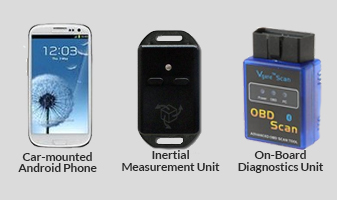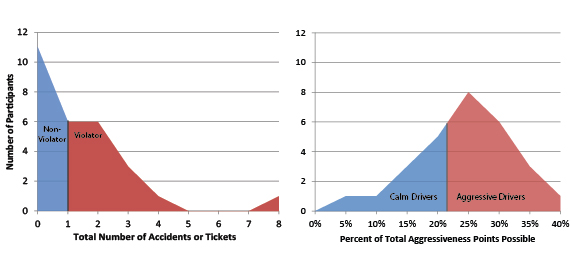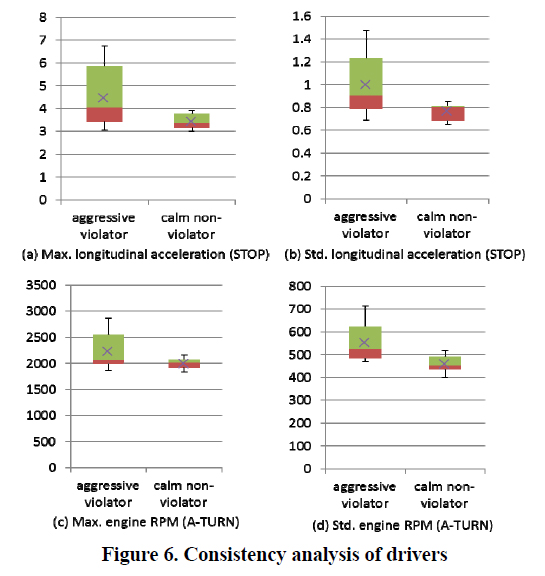Detecting Driver Aggression
Detecting driver aggression using an Android phone and inexpensive external sensors.

ROLES:
Quantitative Researcher, Paper Writer
Research Overview: Android Development and Machine Learning
Aggressive driving is dangerous and expensive for everyone. While some devices exist to measure how someone is driving, they are often expensive or require installation. We investigated if small and inexpensive sensors could be used to detect aggressive driving. This ability could allow people to improve their driving through feedback, and allow insurance companies to use more proximal metrics to determine insurance prices. Our research showed that low-cost sensors can detect driving aggression, and yielded some interesting insights on driver aggression.
I worked with Jin Hyuk-Hong and Anind Dey on this research so I could practice machine learning and work with a favorite topic as a Californian, driving. Primarily, I was responsible for designing and conducting the research and writing the papers. One of the resulting papers was accepted to the 2014 Conference on Computer-Human Interaction.
Research Protocol: Measurement, Annotation, Analysis
Over 3 weeks, we collected and analyzed driver data from 22 drivers. Participants were classified twice – once based off of their responses to a standardized questionnaire (aggressive / calm) , and once based off their (self-reported) ticket and accident record (violator / non-violator).  Participant classification can be seen in the diagram at the right. Participants were given an Android phone preloaded with software, an Inertial Measurement Unit (for mounting on the steering wheel), and an On-Board Diagnostics module (for collecting data from the car). After cleaning the data, we trained and tested a machine learning (ML) model of aggressive driving.
Participant classification can be seen in the diagram at the right. Participants were given an Android phone preloaded with software, an Inertial Measurement Unit (for mounting on the steering wheel), and an On-Board Diagnostics module (for collecting data from the car). After cleaning the data, we trained and tested a machine learning (ML) model of aggressive driving.
GPS Annotation Application
Training a model to detect driving behavior (e.g., right turns) first required manual classification. To ease the manual classification, I designed and built a small web application which allowed us to annotate GPS data on map overlay, and export the resultant enriched data. You can try out the application by saving the file located here into this page. Click into the first number field and hold down a number.
Research Results: A Highly Accurate Model
From the data, we interpreted two main insights about aggressive drivers:
- Aggressive drivers exhibit higher g-forces
- Aggressive drivers have less internal and external behavior consistency
The data behind the second point is depicted at right. 
While the first point may have been intuited, I find the second point pretty interesting. It suggests that those who have a propensity to drive aggressively are not habitually aggressive, but rather they get into a mood. The machine learning model which we trained from the data was able to successfully classify drivers 91% of the time.
Subsequent Investigation on Novice Drivers
Realizing that this data could be useful for helping train novice drivers, I performed an additional study to assess whether self-knowledge of driving skill would increase the rate at which novice drivers improved their driving skill. Partnering with a few local driving instructors, I organized two research methods. First, I conducted long form interviews with instructors to learn from their extensive experience. Second, I collected brief questionnaire data from students and the instructors, and reconciled the values to create a metric of self-perception of driving skill. Jin, Anind, and I found that the accuracy of self-perception increases with each lesson, and that there is a moderate positive correlation between improved self perception accuracy and improvement in driving skill. The resulting note was unfortunately not accepted to CHI, as the research showed only a correlation.